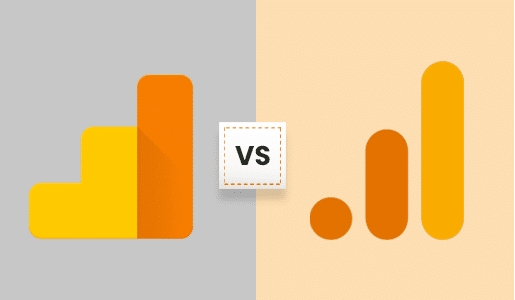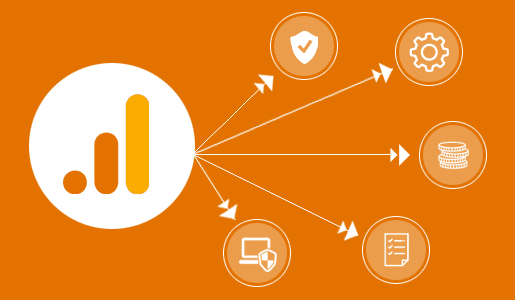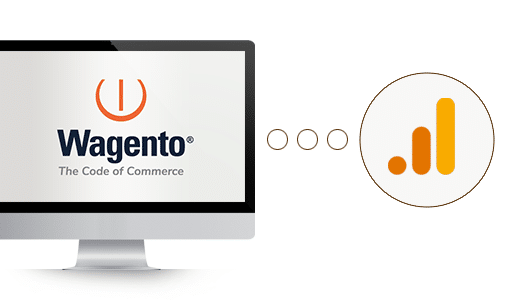
Did you know that Google Analytics 4 (GA4) is set to become the gold standard for data analysis? If you’re an eCommerce marketer, it’s time to get on board! GA4 reports are not just a new trend, they’re a game-changer. They offer a wealth of insights that can help you understand your customers better, optimize your marketing strategies, and ultimately, boost your sales. But with so many metrics available, which ones should you focus on?
In this blog, we’ll guide you through the key GA4 metrics that every marketer should be tracking. Let’s dive in and unlock the power of GA4 reports!
The Shift from Universal Analytics to GA4 & Its Implications

Universal Analytics was already a powerful tool, helping marketers understand website traffic and user behavior. But then came GA4, stepping up the game with even more features.
“Did You Know? Google Analytics 4 is designed to track users across multiple platforms, not just websites. This means you can see how users interact with your brand on apps, the web, and even connected TVs.”
Understanding The Implications
Now, let’s talk about the implications. With GA4, you’re not just getting more data; you’re getting better data. For example, GA4 can track the entire customer journey, from the first ad click to the final purchase. This gives you a complete picture of your customer’s experience.
In short, Google Analytics 4 is not just a new tool; it’s a new way of understanding your customers. So, if you’re a marketer, it’s time to make the switch and start exploring the power of GA4 reports.
Understand Metrics and Dimensions in GA4

When you set up your new GA4 property, you’ll gain access to a range of analytical reports. These GA4 reports consist of dimensions and metrics, each serving a unique purpose in analyzing your data.
Dimensions
Dimensions act like descriptive tags, adding context to your data. They represent the attributes or characteristics of user behavior on your website. For example, “City” tells you where a user is browsing from, while “Browser” indicates the type of browser they’re using, like Chrome or Safari.
Metrics
Metrics, on the other hand, provides numerical data that quantifies user actions and behaviors. They are the actual numbers that reveal user interactions. For instance, “Sessions” counts the number of times users enter your website, and “Total Users” shows the count of unique visitors.
So, dimensions add context and describe data characteristics, while metrics offer quantifiable measurements to understand user performance.
By combining both dimensions and metrics, you can gain valuable insights into user interactions and fine-tune your marketing strategies for better engagement and conversions.
Why Understand Their Differences
Now, why is it important to understand these differences? Well, it’s simple. Understanding metrics and dimensions in GA4 helps you analyze your data more effectively.
For instance, you might find that your site has a high number of visits (a metric), but when you look closer (using a dimension), you see that most of these visits are coming from a specific location. This insight could help you tailor your marketing strategy to that particular region.
According to a survey, businesses that effectively use metrics and dimensions in GA4 have seen a 10X improvement in their marketing strategies. So, it’s clear that understanding these differences is not just beneficial, it’s crucial for your eCommerce success.
In the world of eCommerce, data is your compass. It guides your marketing strategies and helps you navigate toward success. Let’s dive into the key GA4 metrics that every eCommerce marketer should track.
Key GA4 Metrics Every eCommerce Marketer Should Track
Let’s explore the top metrics that you should track with GA4 to supercharge your marketing game!
User Engagement: Time on Page and Bounce Rate
GA4 offers valuable user engagement metrics that go beyond the traditional bounce rate. Keep an eye on the average time users spend on each page to gauge their interest and content relevancy.
If you notice high bounce rates and short time on page, it’s a sign that you need to optimize your content to keep visitors engaged. This data can help you identify which pages need improvement and which ones resonate with your audience.
Conversion Rate and Goal Completions
Ultimately, your marketing efforts aim to drive conversions. GA4’s advanced conversion tracking allows you to set up custom goals and track their completions.
Monitor the conversion rate to see how effective your campaigns are in driving desired actions, such as form submissions, purchases, or newsletter sign-ups. Adjust your strategies based on these metrics to optimize your conversion funnel.
Behavior Flow: Understanding User Journey
GA4’s behavior flow report lets you visualize how users navigate through your website. You can easily spot drop-off points in the user journey and identify pages where visitors often exit.
This insight helps you optimize your website’s navigation and content flow, ensuring a smoother user experience and encouraging users to take desired actions.
Event Tracking: Analyzing User Interactions
In GA4, event tracking provides a more comprehensive view of user interactions. You can track specific actions like button clicks, video views, form submissions, and downloads.
By monitoring these events, you can understand how users engage with your website and content. Use this information to finetune your marketing strategies and create more compelling calls-to-action.
Audience Insights: Demographics and User Acquisition
GA4 offers enhanced audience insights, providing valuable data about your website visitors. Analyze demographics, interests, and user acquisition channels to understand your audience better.
Tailor your content and campaigns to target specific demographics and use the most effective acquisition channels to reach your ideal customers.
GA4 is not just about the standard metrics; it allows you to create your own custom metrics tailored to your eCommerce goals.
The Power of Custom Metrics in GA4
Let’s explore the power of custom metrics and how they can elevate your data analysis to new heights.
How Custom Metrics Can Be Created in GA4?
Creating custom metrics in GA4 is like having your very own magic wand. With just a few clicks, you can conjure up metrics that are specific to your eCommerce store’s needs.
Whether it’s tracking the number of clicks on a particular product button or measuring the time spent on a specific page, custom metrics give you the freedom to customize your data.
For example, let’s say you want to measure the effectiveness of your email marketing campaign. You can create a custom metric called “Email Click-Through Rate,” which calculates the percentage of users who clicked on the links in your emails. This metric will help you understand how well your emails are driving traffic to your eCommerce store.
Custom Metrics Can Provide Unique Insights for Marketers
Custom metrics are like the secret sauce that makes your data analysis extraordinary. They uncover hidden patterns and insights that standard metrics might lack.
Here are a couple of examples:
Cart Abandonment Rate
This custom metric tracks the percentage of users who add items to their cart but leave without completing the purchase. By knowing this rate, you can identify where customers are dropping off and improve conversions.
Repeat Purchase Rate
This custom metric calculates the percentage of customers who make multiple purchases. A high repeat purchase rate indicates strong customer loyalty and satisfaction, while a low rate might signal the need for customer retention strategies.
So don’t miss out on the power of custom GA4 metrics; they hold the key to unlocking unique insights for your eCommerce success.
Now that we’ve explored the key GA4 metrics, let’s uncover how to turn these valuable insights into eCommerce success.
Leveraging GA4 Metrics for Business Success
Leveraging GA4 metrics is like having a treasure map that guides you to the pot of gold—the perfect marketing strategy for your eCommerce store.
How to Use GA4 Metrics to Inform eCommerce Marketing Strategies?
GA4 metrics are like your trusty compass, helping you navigate the vast digital landscape. By analyzing these metrics, you can fine-tune your marketing strategies to attract more customers and boost sales. Let’s look at how GA4 metrics can guide your marketing decisions:
Target Audience Optimization
Use metrics like Users and Engagement Rate to identify your most valuable customers. Tailor your marketing efforts to meet their needs and preferences.
Content Optimization
Analyze Views per User and Average Engagement Time to understand which content resonates with your audience. Create more of what they love and less of what they don’t.
Conversion Optimization
Dive into Sessions Conversion Rate and Conversions to identify bottlenecks in your sales funnel. Optimize your checkout process for a smoother customer journey.
Professional Help

Whether you’re a seasoned marketer or just starting, tracking these metrics will set you apart from the competition and lead you to marketing success.
At Wagento, we are your allies in the realm of marketing and GA4 expertise. Our team of skilled professionals can guide you in harnessing the full potential of GA4 metrics to elevate your marketing game. From data analysis to strategic planning, we’ve got you covered.
In case you need help with navigating the complexities of eCommerce marketing, don’t fret. Let us be your partners on this data-driven journey, and together, we’ll chart a course to business triumph.
Take the first step towards data-driven success with the GA4 today.
Our Thoughts
GA4 metrics are like treasure troves of information that reveal your customers’ behavior, preferences, and needs. From Users and Engagement Rate to Conversions and Lifetime Value, each metric plays a crucial role in shaping your eCommerce success.
Remember, tracking these metrics is like having a crystal ball that foretells your customers’ desires and actions. Armed with this knowledge, you can make data-driven decisions and steer your marketing ship in the right direction.
What are you waiting for? Contact our professionals today!













